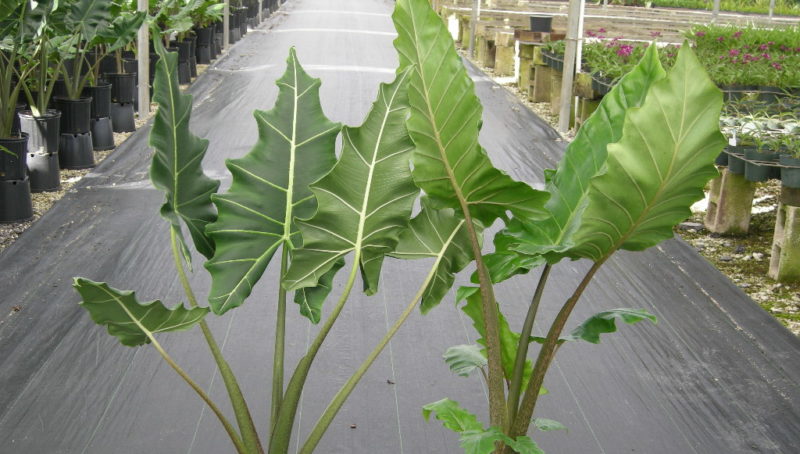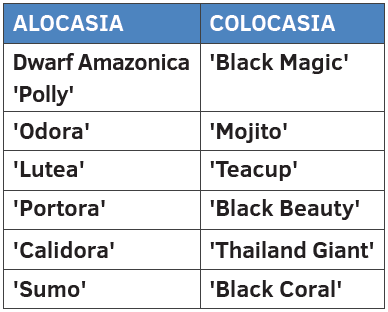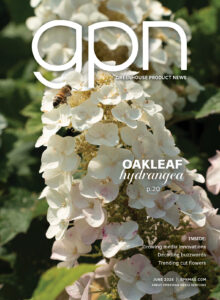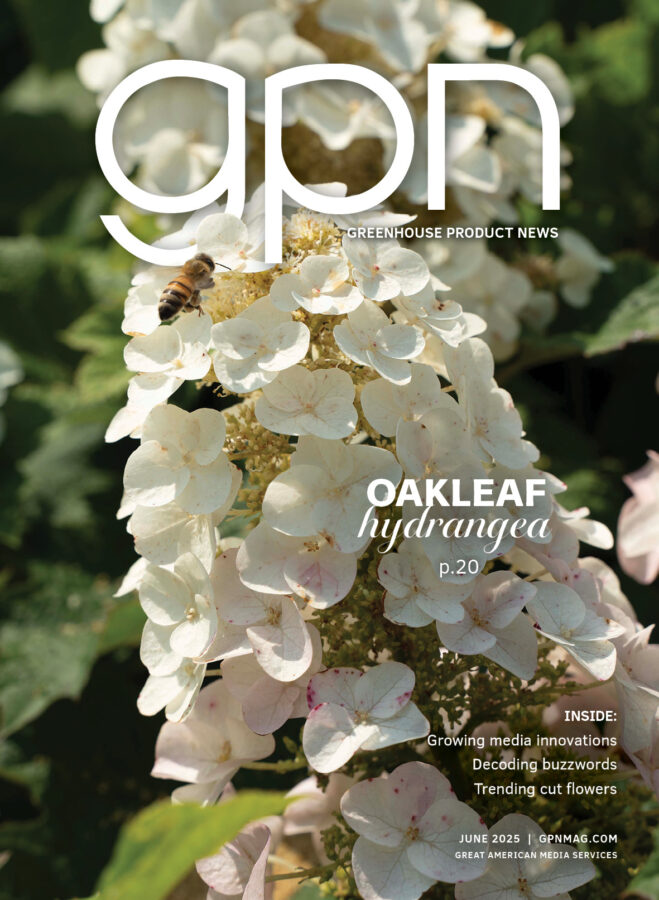
Lets Talk Elephant Ears
Growing up in Maryland, nothing screamed tropical more than a plant with large leaves. It didn’t take long for me to quickly fall in love with alocasia and colocasia. Now that I live in Miami, they are a happy addition to my collection of plants in the yard. Coming from the same family of Araceae, they have many different shapes, sizes and colors. They are both herbaceous perennials with a large corm on or just below the soil line. From houseplant to combination
pot to specimen in the garden, you can probably find one of these to suit your needs.
NOTABLE DIFFERENCES
It wasn’t until I moved to Miami that I even understood some of the differences between the two. I found myself inappropriately using their names interchangeably, although they do have some differences.
The most noticeable difference between the two is direction of the leaves. Typically, alocasia will have their leaves with the tip pointing up, whereas colocasia typically have their tips pointing downward. This is not a guaranteed difference but will incorporate the bulk of them with a few exceptions. The petiole on alocasia are typically attached at the leaf
notch, while colocasia are typically attached down from this notch.
Another difference between the two are the differences between the shape of their tubers. Alocasia typically have a more elongated tuber and colocasia have a much rounder, ball-type tuber. In general, alocasia will prefer a partial shade environment with well-drained soil.
Colocasia, on the other hand, can generally handle full sun and wet conditions. As with the direction of the leaves, this is the norm, but not always the rule. Mother Nature loves to have exceptions on these factors as well.
The true difference between the two, which is a hard rule, is the difference in the morphology of the flowers. It is microscopic, so the general rules above are much easier to follow. In alocasia flowers the placenta is basal, and in colocasia it is along the interior sides of the embryonic future berry.
GROWING ALOCASIA AND COLOCASIA
Commercially, both are typically produced from tissue culture (TC). It is not uncommon to find many of the varieties available from tubers in the retail setting, although consistency is much better when produced from TC, typically in a 72-cell liner.
Although a tropical, they have a fairly rapid growth cycle. In general, from TC to finished only takes eight to 12 weeks. The characteristics of the variety will dictate what pot size they should be finished in. Being tropical, they will need to maintain temperatures above 60° F, or they can start to decline. Whether alocasia or colocasia, they prefer to be in a humid environment. They do tend to be heavy feeders with their rapid growth rate. Keeping the EC of your soil
between 1.5 and 2.0 is best. This can be done with either liquid fertilizer or controlled release, or a combination of the two.
The most common disease issues for these are Xanthamonas along with crown, stem and root rot. The best management will be in maintaining a good wet/ dry cycle for the plants. This is more associated for the alocasia than the colocasia. The most common insect issues are whitefly, mealybugs and aphids. With their leaf shapes, it is important to get your applications to the undersides of the leaves, or work with systemic products.
Some of the more popular varieties of each of these are listed below.

When determining which varieties to grow, one of the more important aspects after size is how the product is going to be shipped. It is important to protect the leaves during transit; the larger the leaves, the worse the damage will appear upon arrival if they aren’t protected. Because of this, it is best to sleeve the plants when possible. This is easier to do with alocasia with the leaves pointing upwards as they will nicely fold into the sleeve.
If you want to add a nice tropical look to your product line, look no further than Elephant Ears. I am sure I am not the only northerner to look at these plants this way!









 Video Library
Video Library 


















